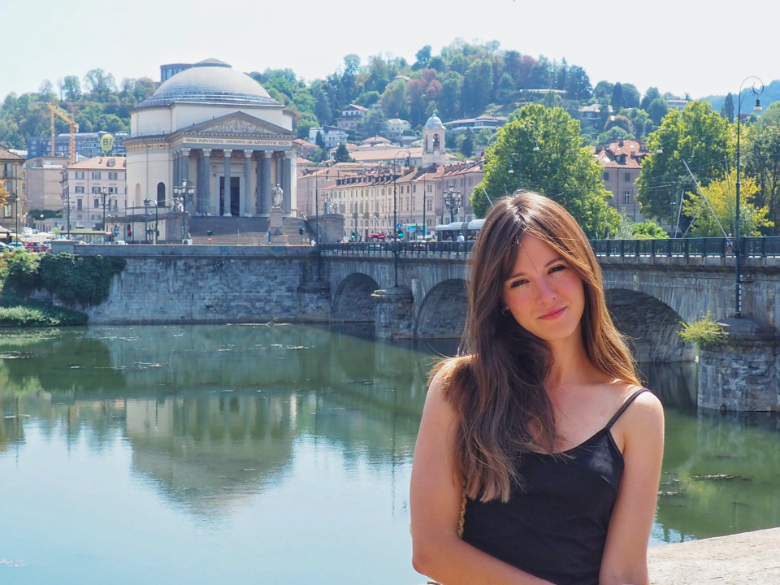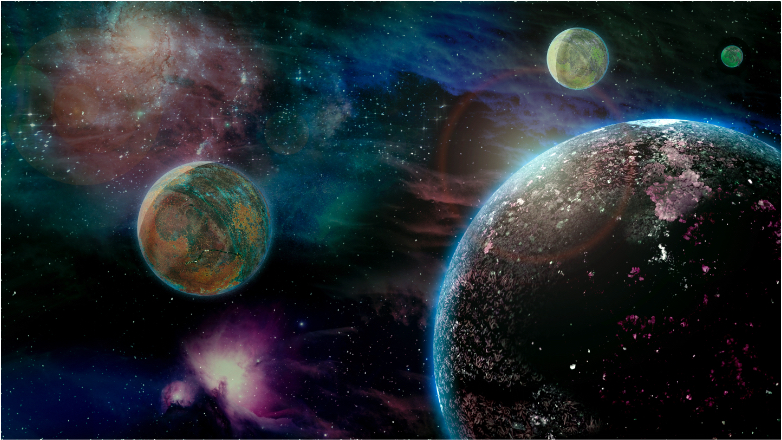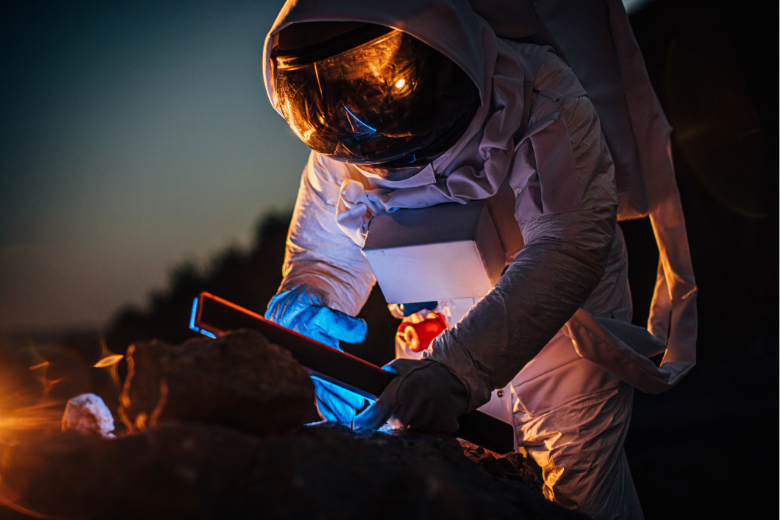She searches for exoplanets that are as similar to Earth as possible. Her eyes are constantly fixed on a world as distant as it is fascinating. Ada Canet Varea (Valencia, 1993) is already accustomed to receiving recognition as a brilliant young talent. And it’s no wonder when she talks about her achievements. “My research focuses on the study of exoplanets, more specifically, those that are most similar to our own planet. I study how the stream of ionised material that is constantly ejected from stars like our Sun, known as the stellar wind, interacts with exoplanetary atmospheres.”

It sounds very remote, and it’s difficult for the uninitiated to answer the question we all ask ourselves when we’re told about something unknown. What’s the purpose of this research? “This study is fundamental to determine the habitability conditions of these Earth-like planets, and whether this interaction can leave a trace that we can detect with the right instruments,” explains the professor. “Since we don’t currently have the instrumentation to make observations that will tell us what this kind of interaction looks like, I study this interaction through numerical simulation. This is a fundamental tool, not only to verify our hypotheses with observations, but also to prepare us for the observations that will come with the future and the much more sophisticated instrumentation that will be available in the coming decades.”
Ada Canet graduated from the Complutense University of Madrid with a double degree in Physics and Mathematics, specialising in Applied Mathematics and Applied Physics (Earth Physics). But the specific aim of her current research is very concrete. She explains it this way: “It is known that stellar radiation, especially the energetic radiation corresponding to wavelengths such as X-rays and ultraviolet, plays a fundamental role in the survival of planetary atmospheres, especially during the early stages of their life,” she says. “However, the effect that stellar winds can have has not been studied as extensively,” she adds.
“I investigate how the atmospheres of Earth-like planets evolve, or what kind of structures we will find in the vicinity of these planets, and whether we will be able to detect them with the instruments that will be on board the missions that are being designed right now.”
The novelty of her research is no less than that she wants to show “that the characterisation of the interaction of stellar winds with planets is fundamental, because it can give us clues about how the atmospheres of Earth-like planets evolve, or what kind of structures we will find in the vicinity of these planets, and whether we will be able to detect them with the instruments that will be on board the missions that are being designed right now.” In other words, teams like this astrophysicist’s are helping to make space missions increasingly sophisticated and their objectives as plausible as possible, thanks to the equipment designed and tested here on Earth. “When studying this type of interaction, the inclusion of magnetic fields is fundamental because they are present in this type of interaction,” adds the researcher.

And one wonders, how does someone end up researching something so far away? Was it simply by looking at the night sky in her native Valencia? “During my university studies, I became passionate about studying our own planet, what its magnetic field is like and how it has evolved over the course of Earth’s history. I was fascinated by the fact that the other planets in the Solar System are completely different from ours, as is the case with Mars.” She then realised that in the exoplanetary context, “the possibilities are endless”: “This motivated me to study what makes a rocky planet a habitable world, or conversely, what makes it become a completely inhospitable place. I’ve always had a curiosity for exploration, and this is an extraordinary form of exploration.”
“A study on this type of waves of the host stars of planets is essential to understand the environment around potentially habitable planets.”
“My research is based on the study of stellar winds. These winds change with stellar evolution; they are much more violent in young, very active stars, and weaker for stars with lower activity,” she explains with genuine passion. “Stellar winds are a reflection of the star itself, so a meticulous characterisation of the stars is essential. In particular, ultraviolet radiation is a part of the electromagnetic spectrum that gives us many clues about the state of the star, based on its activity.” And the conclusion of all this is not trivial: “A study on this type of waves of the host stars of planets is essential to understand the environment around potentially habitable planets,” she asserts.

As a professor of astronomy in the Faculty of Mathematical Sciences at the Complutense University of Madrid, she talks about science education in this way: “For the vast majority of my students, who are usually immersed in complex problems of analysis, differential calculus, topology, etc., teaching them that mathematics is fundamental to understanding a world as exciting as astrophysics awakens in them a great deal of curiosity. It’s an honour to be the person who talks to them for the first time about how we locate stars in the sky, how we measure distances, how we detect exoplanets… or even what a quasar is,” she says modestly. And she must be very good at it, because she sees the results herself: “Many of them end up going into astrophysics, and I welcome that, because the future of astrophysics needs mathematical minds.”
“It’s an honour to be the person who talks to them for the first time about how we locate stars in the sky, how we measure distances, how we detect exoplanets… or even what a quasar is.”
Her main medium-term goal is to combine research with university teaching, and to continue to encourage young people to pursue these careers. “I’m passionate about teaching and the university is an ideal environment to combine my two main interests, teaching and, of course, continuing to learn through research. There’s no doubt in my mind that getting to know other research groups, both national and international, is fundamental for the progress of everyone’s work.” And she encourages young people to move around the world, to learn: “I myself have done several stays in other countries, even during my studies, and you learn other methodologies, other concerns, other ways of doing research, even some details that often escape us. That is why I want to learn, but also to establish many collaborations, which is fundamental in astrophysics and in science in general.”
Comments on this publication